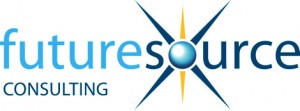Guest Contributor, Chris Mcintyre-Brown
This week, the news wires were buzzing with news of Samsung deciding to end of life (EOL) its range of transparent OLED (TOLED) displays. The Futuresource team reported seeing TOLED products front and centre during visits to both ISE and InfoComm China this year, so this news was a touch surprising. Or with hindsight, was it really?
 Futuresource has undertaken numerous studies to understand the potential of transparent display devices which spiked again in 2015 with the introduction of TOLED. These studies typically involve an upstream review of component production and downstream analysis of demand and usage drivers. The findings varied very little with a common set of barriers, more barrier than drivers unfortunately, dominating the discussions.
Futuresource has undertaken numerous studies to understand the potential of transparent display devices which spiked again in 2015 with the introduction of TOLED. These studies typically involve an upstream review of component production and downstream analysis of demand and usage drivers. The findings varied very little with a common set of barriers, more barrier than drivers unfortunately, dominating the discussions.
At a production level, and regardless of if the display was transparent or not, OLED struggles with production efficiencies in large screen sizes, maintaining extremely high price points against LCD displays. Increasing competition from Chinese LCD panel producers, coupled with the introduction of quantum dot (QD) and high dynamic range (HDR), only accentuates this position. However, it is clear that OLED is receiving an ever increasing amount of attention with mass adoption across mobile devices, securing huge R&D budgets and an investment/attention from major panel vendors ramping up in 2016. From a Pro AV perspective, LG have been showcasing OLED technology at both the ISE and InfoComm shows this year. Whilst they looked quite stunning, it was notable that LG largely stood alone in this area and one can’t help but feel that this was more a glimpse of what is possible than a serious push for one of the leading commercial display vendors.
Of course transparent displays are nothing new to the Pro AV industry, with LCD options launched as early as 2012. The reception was mixed at best with endless interesting opportunities including fridges, vending machines and display cases, but few genuine use cases that justified the heavy cost of hardware. Beyond the high price premium, the achievable level of transparency has also been relatively low for LCD solutions, between 10-20%, with a number of component vendors and manufacturers feeling the ability to increase this ratio would overcome a significant barrier to more mainstream adoption. OLED technology gives a significant boost to transparency, but takes the hardware cost out into the stratosphere again.
The launch of TOLED rejuvenated interest in this segment but ultimately it has suffered a similar fate as TLCD: where is the use case? How do I justify the high CAPEX? What will be the ROI against alternative display options?
So does the exit of Samsung from TOLED spell the end for this technology? Futuresource certainly doesn’t think so. Samsung is a volume player, sometimes display technologies are just ahead of their time and this is true for both OLED and transparency in general. All the markers seem to indicate OLED will ultimately be the ‘next’ mass display technology but this will take time. Though I cringe to mention it, a little like the faux pas of mentioning the Minority Report in a digital signage presentation, one can’t help but be drawn to the Corning video ‘A Day Made of Glass’ (now viewed a staggering 25 million times) and recognise that transparent displays will become increasingly common in our lives. There are many exciting use cases for transparent displays, like everything in this business, it’s just a matter of timing.

Follow DailyDOOH